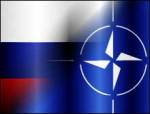
Following the dissolution of the Soviet Union and the Warsaw Pact, NATO has enlarged its membership twice with countries formerly under Soviet influence and control, and the Alliance is now preparing to begin the process for a third expansion effort. During this time, Russia has watched the borders of NATO creep ever closer to its own, but has generally been powerless to prevent it.
EXECUTIVE SUMMARY
Although NATO has taken pains to include and consult with Russia regarding its actions and future plans, the Kremlin cannot reasonably be expected to continue to watch NATO’s expansion eastward without eventually pushing back hard. Without question, many significant issues and challenges must still be solved before enlarging the Alliance once again. In light of this, NATO must work rigorously to continue to keep Russia engaged in a productive and mutually beneficial relationship as both sides work through the future obstacles that inevitably will arise in the NATO -Russia relationship.
I found most of my material for this project from local sources in the Washington, D.C., area, from NATO printed publications and materials, and from Internet sources. I used materials from all sides of the problem and from all significant parties involved. Although the relationship continues to evolve, my research led me to conclude that, in order to keep Russia reassured and working productively with NATO, there are a number of concrete actions the Alliance can and must take to avoid squandering the historic opportunity before it.
Lieutenant Colonel Gordon B. Hendrickson
Image: russia_nato.jpg
